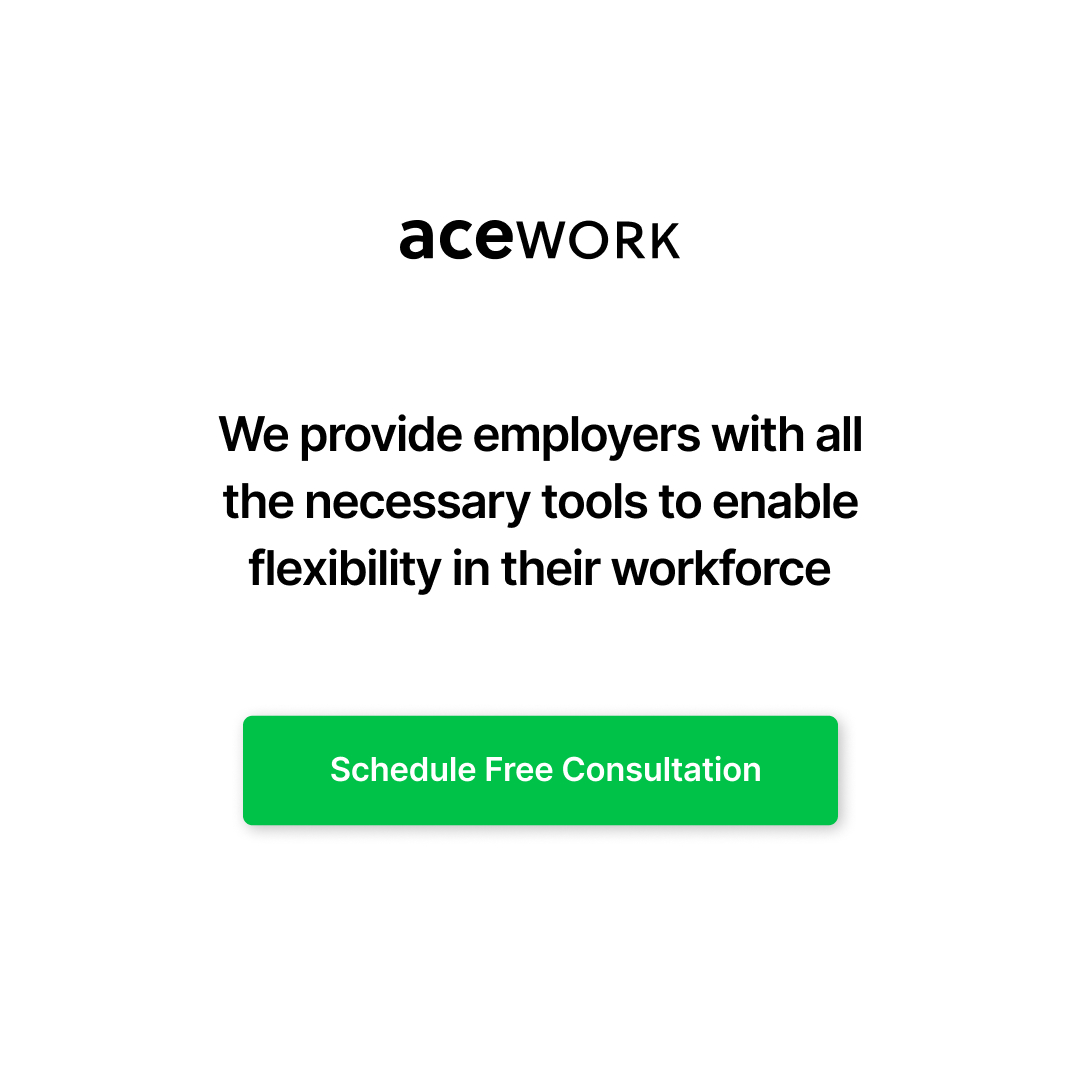Before the pandemic flexible work wasn’t top of the priority list for most companies. There simply wasn’t an urgent need for it. Since March 2020 a large majority of office workers had to work from home and they proved to do so productively. With post-pandemic life on the horizon, a recent survey found promising results. 65% want to continue full-time remote work and 31% want some form of flexible work. That’s a number that can not be ignored. It’s time to implement flexible work policies for the long term. There are more benefits than just improving the quality of life for employees. We’ve already talked about the importance of women workers in your remote workforce. However, do you know how much change remote work could bring to your industry? Flexible work has the potential to improve some longstanding inequalities; the gender gap in the workforce and the gender pay gap.
What is the Gender Gap?
Not to be confused with the gender pay gap; the difference in pay between men and women. The gender gap is “The difference between men and women as reflected in social, political, ideological, cultural or economic achievements or attitudes.” as defined by the World Economic Forum. In the workforce, the gender gap refers to the difference between positions and responsibilities attained by men compared to women.
So far, the global average gender gap is at 31.4%. Unsurprisingly, at this rate, it’s only set to close in 99.5 years. One of the biggest gaps can be seen in board positions with the global percentage held by women at a disappointing 23.3%. The share of women in senior management roles is a little higher, at 29%. So how can flexible work close that gap sooner than the year 2119?
Problems of gender inequality in the workplace are not uncommon. Here are just a few you should be aware of:
Kids = The end of a woman’s career?

Having children plays a big role in the gender pay gap. Studies on wage progression show that the gender wage gap gradually widens from the first child. By the time the child reaches 20 a woman’s hourly wages account for around a third of men’s. It’s an age-old belief that women are the primary caregivers in a family. Therefore making them more likely to take on a part-time role after having children. However, women are just as qualified and educated as men. They would earn 60% more if they were paid equally to their male counterparts.
Sexual harassment in the workplace
Since the #MeToo movement has brought this to light, the statistics have shocked men and women alike. The sexual harassment women are subject to in the workplace, particularly on-site, is a huge problem. It can occur in many forms, from sexual favours in exchange for a work perk to a hostile work environment. 75% of women reported sexual harassment in a professional capacity or top management jobs in their lifetime. This can cost companies valuable employees and company profits due to increased employee turnover and absenteeism.
The Gender Gap: Why Flexible Work
The previous lack of flexible working opportunities for higher-level positions meant many women took on lower-paid flexible roles. This enabled them to build a work-life balance around other responsibilities such as childcare. In the UK more than half the 427,000 women on career breaks will return to lower-paid or part-time roles.
Children aren’t the only factor. An article by Forbes suggests women are more likely to stop working to care for elderly family members. It’s seen as a women’s choice to opt for part-time work rather than attributing this to the lack of flexible options. This further enforces the patriarchal view of women being in the house and not working. However, men as primary breadwinners of a household certainly do not hold up anymore. Flexible work is the key to retaining women workers and building a healthier work-life balance overall. Further studies also show that working from home is vital in retaining all talent. 27% of workers are willing to take a 10%-20% pay cut to do so.
There is an issue with only 23% of women in board positions. It further fuels the wrong perception that men are the primary decision-makers in a business environment. Understandably many leadership positions are extremely demanding in terms of working hours. Additionally, business-related travel makes it near impossible for many women to integrate flexible work and life responsibilities. This means it’s also less likely for women to climb up the ladder to reach those positions – even more so for women of colour.

In a recent report, studies show that senior-level women are much more likely to practice allyship than senior-level men. Without an increase in women in management and board positions, women won’t have a chance to level the playing field. If we can provide flexible work for everyone then we are even closer to closing the gender gap. Location-independent work can provide the flexibility to work the sometimes long hours required to succeed in leadership positions. This can indeed be difficult for some women. However, working from home alleviates some of this by cutting out long commutes and constant business travel. Flexible work can enable all talent to further build their careers without ceasing their ideal work-life balance.
??? Convince Your C-level Execs of a Flexible Workforce. Download actionabe guide for HR Leaders ???
Where to Begin in Four Steps
1. Job Descriptions Need to Promote Flexible Work
By advertising all roles with flexible work options and gender-neutral language, Zurich made a life-changing move for the female workforce. A 16% rise was seen in overall women applying, a 19% increase in women applying to management roles and an increase of 33% of women hired for senior roles. This was considered a direct result of the language used in the job descriptions. Many of the roles advertised weren’t previously available part-time or flexibly. The clear lack of flexible working arrangements made female talent less likely to apply.
2. Make a commitment to better management
With the sudden shift to remote work in March 2020 a lot of managers fought the change. They argued that they now can’t see their employees working. This is an issue of micromanagement when work is based on what they can see rather than output. For a streamlined flexible work process, it’s important for remote managers to “manage not monitor”. Make sure to set clear but realistic expectations. Asking team members to respond in less than 5 minutes and notifying their toilet breaks is a toxic workplace habit and will derail trust.
True flexibility comes with handing over responsibility and accountability to your team members. Managers must enable them to make decisions and prioritise correctly.
3. Offer Flexible Work Options Post-Pandemic
The Mckinsey report shows that 1 in 3 mothers have cited childcare responsibilities as the primary reason for considering leaving the workforce. However, for the many moms that working from home came as a blessing they hope to continue post-pandemic. A study found that nearly 43% of full-time American employees also want to continue working remotely. The reasons widely vary. 55% state they prefer no commute and 48% want a more flexible work schedule. Once again these numbers are hard to ignore for companies going forward. Flexible work is crucial in retaining talent. It also further opens the talent pool for any positions not filled locally.
4. Utilising the Strengths of Women in Leadership
Since the beginning of the Covid pandemic, global women leaders responded incredibly. Their efficient and empathetic leadership approach to the crisis was praised worldwide. From Iceland to Denmark and most notably New Zealand, the female Prime Ministers with a zealous approach came out on top. All thanks to their fast and often bold initiatives resulting in fewer cases. In the remote work environment, female leaders also entered the spotlight in many companies. Due to their response, we’ve seen a multitude of strengths from women in leadership positions.
- Research by the Harvard Business Review found that women outscored men on most competencies. A higher overall leadership effectiveness rating both pre-pandemic (Men 49.8 to Women 53.1) and during (Men 51.5 to Women at 57.2).
- Additionally, in research spanning four decades by Gallup female managers also took the lead. Studies showed that employees working under female managers are 1.26 times more likely to say that someone is looking out for their career development.
- The female leadership style is “transformational” compared to the male “manage by exception” style. Research shows that female leadership is more caring, inspiring, encouraging and engaging. It facilitates growth and they genuinely care for their colleagues. In comparison, the research on male leadership shows that they only intervene when a problem becomes apparent.
Closing the Gender Gap: Focus on Female Leaders
In a remote environment, employee engagement is crucial in maintaining employee happiness. They work hand in hand and it’s up to management to implement them. We’ve already spoken about needing women workers in your workforce. However, women leaders bring more to a company than just diversity. The level of empathy that women leaders bring to the table creates that transformational leadership that is hard to beat. Especially in flexible work environments where loneliness is the top drawback. This humanistic approach is important in this digital era. Employees have shown that creating informal “water cooler” experiences facilitate an unforgettable connection. A more personal approach is the key to a successful and happy team. Employees prefer realness. Setting up a casual get-together whether in person or virtually is a lot better when empathy is involved.
Flexible work is the key to closing the gender gap
The place to start is with more women in senior and leadership roles. To do this, start within the company.
- Set company-wide recruitment goals so everyone has a target in mind. Flexible work enables a wider and often, global, talent pool depending on your company. An example can be seen with Airbnb’s dual diversity goals. Their goal is for 20% of its US workforce to be comprised of underrepresented minorities and to reach 50% in the representation of women by 2025.
- Use neutral terminology in your job descriptions. Using male-biased terminology such as ‘strong’, ‘determined’, or ‘competitive’ results in fewer female applicants regardless of the role. Not only is neutral terminology more gender-inclusive but also appealing to a wider and more diverse applicant pool.
- Lastly, as mentioned above, implement flexible working arrangements. Rather than employees having to ask for flexible work, make it an option from the beginning. That doesn’t just mean adjusting the job description. You need to actually implement a flexible work policy company-wide. This can cater differently to individual teams. However, building a clear flexible work policy will create a flexible working culture appealing to female talent.

At acework, we enable businesses to build their successful distributed workforce. We can help you find and hire experienced female professionals looking for flexible career opportunities. Our advisory creates actionable strategies for companies based on their culture, processes, and business needs. Schedule a free strategy session to start building your high performing diverse and distributed team.






